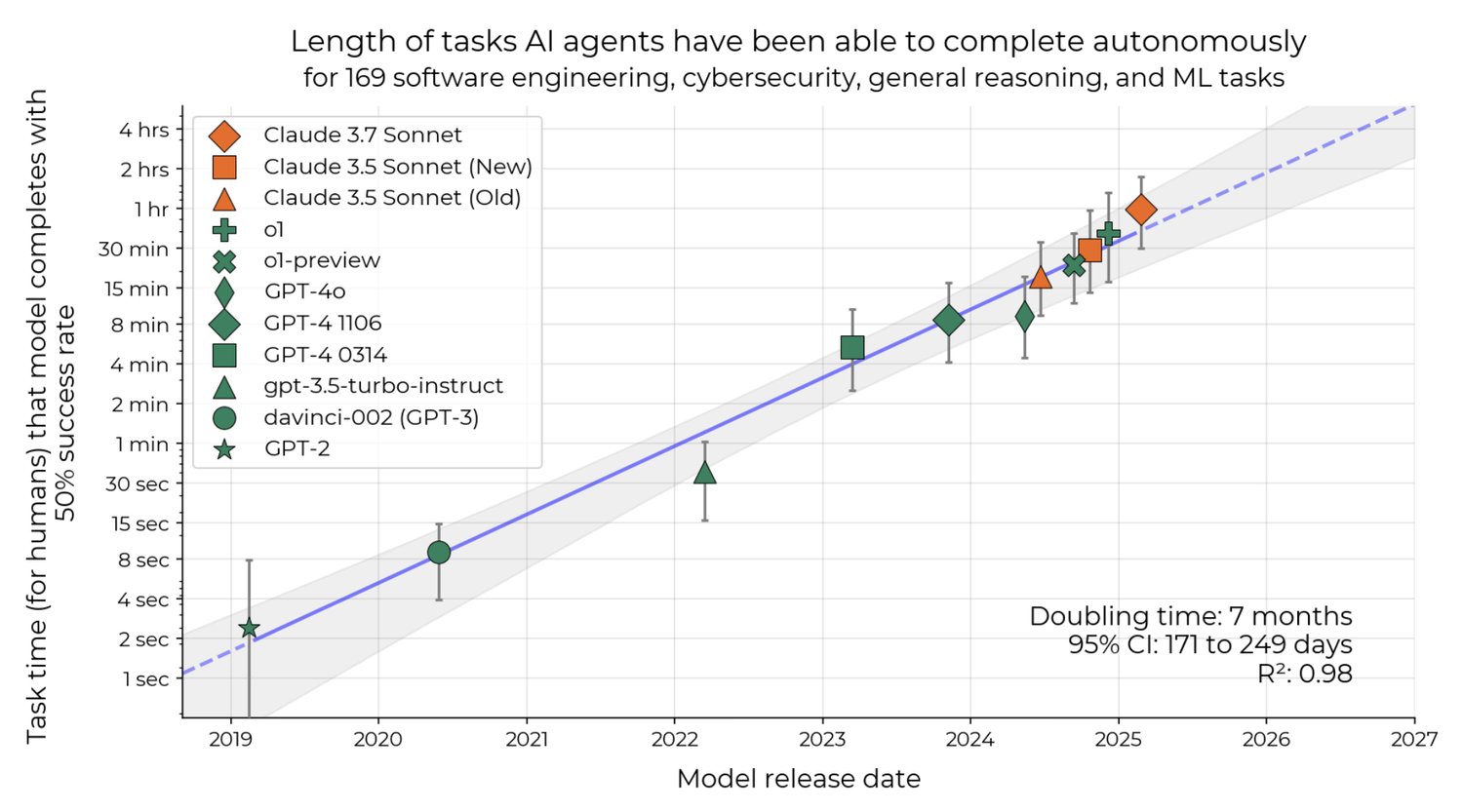The AI Endurance Test: Why 'Task Half-Life' Is a Strategic Imperative for Deep Tech Founders

Introduction: The AI Paradox – Brilliance and Brittleness

The current AI landscape is defined by a fascinating paradox. We see systems demonstrating brilliant capabilities on specific tasks, yet they often remain brittle when faced with complex, long-duration projects that require sustained, multi-step execution. This gap between a momentary capability and sustained reliability is the critical challenge for deploying AI in mission-critical applications.
Recent analysis, notably by Toby Ord of Oxford University building on empirical work from METR, offers a compelling framework to understand this: the concept of an ‘AI success half-life.’
For us at Awesome Ventures, and for the deep tech founders we partner with, understanding this ‘half-life’ isn’t just academic. It has profound strategic implications for building resilient AI, identifying defensible market positions, and ultimately, shaping the future of technology.
Understanding AI’s “Half-Life”: What It Means in Practice

Imagine an AI agent tackling a complex engineering design. Ord’s model suggests that for every unit of effort a human would take, there’s a small, consistent chance the AI will falter. The longer the overall task, the more these chances accumulate, causing an exponential drop in the probability of success—much like radioactive decay.
This has a critical consequence: a 16-hour task is not simply twice as hard as an 8-hour task for an AI. If an 8-hour task has a 50% success rate, the 16-hour task would have a 25% success rate, due to the compounding risk of failure. This dynamic is the AI “Endurance Test.”
Strategic Imperatives for Deep Tech Founders
If AI has a “half-life,” the antidote is designing systems that are inherently more resilient or can “reset the clock” on failure probability. This leads to four strategic imperatives for founders:
-
Design for Resilience and Modularity: Since complex tasks are chains of sub-tasks, a failure in one link can break the entire chain. The innovation opportunity lies in building systems with robust error detection, recovery mechanisms, and the ability to learn from sub-task failures without jeopardizing the entire mission.
-
Engineer for Human-AI Collaboration: Ord’s analysis notes that human performance on long tasks often decays slower than AI’s. This suggests humans excel at course correction and adaptive reasoning over extended periods. The most effective solutions will be symbiotic systems where AI handles high-speed segments and humans manage oversight, integration, and recovery from novel failures.
-
Build Realistic Roadmaps: We must move beyond impressive demos. True capability lies in sustained performance. A 50% success rate on a 1-hour task is a milestone, but what is the path to 90% success on an 8-hour operational task? That journey is where deep tech value is created.
-
Redefine the Innovation Frontier: The current “half-life” limitation isn’t an endpoint; it’s a frontier. The next wave of transformative AI companies will be those that fundamentally alter this decay curve through new architectures, superior memory handling, or novel approaches to decomposing complex problems.
Awesome Ventures’ Perspective: Investing in AI Endurance
This framework resonates deeply with our investment thesis at Awesome Ventures. We believe that lasting value in deep tech AI will be built by companies that move beyond fleeting successes to deliver robust, reliable, and scalable solutions for real-world problems.
When we evaluate opportunities, we look for:
- Architectures for Resilience: Startups designing AI with modularity, sophisticated error handling, and effective human-in-the-loop integration.
- Pragmatic Roadmaps: Founders with a clear-eyed view of current limitations and a strategic plan to incrementally expand the scope and duration of tasks their AI can reliably perform.
- Focus on High-Value Problems: Companies achieving very high reliability on well-defined, economically valuable tasks.
Conclusion: Mastering the AI Endurance Marathon
While the pace of AI progress is staggering, the “half-life” concept is a grounding reminder that the journey to truly autonomous and reliable AI is a marathon, not a sprint. The most successful deep tech companies will be those that master not just capability, but the engineering and systems thinking required for dependable, sustained performance.
For founders building in this space: How are you thinking about the “endurance” of your AI systems? What strategies are you employing to extend their operational “half-life”?
We believe the ability to solve longer, more complex tasks reliably will define the next generation of AI leaders. If you’re building it, we’d love to hear from you.
Acknowledgments: Our strategic framework on AI endurance draws inspiration from the insightful analysis by Toby Ord (“Is there a Half-Life for the Success Rates of AI Agents?”) and the foundational empirical research from METR (Kwa et al., 2025).
